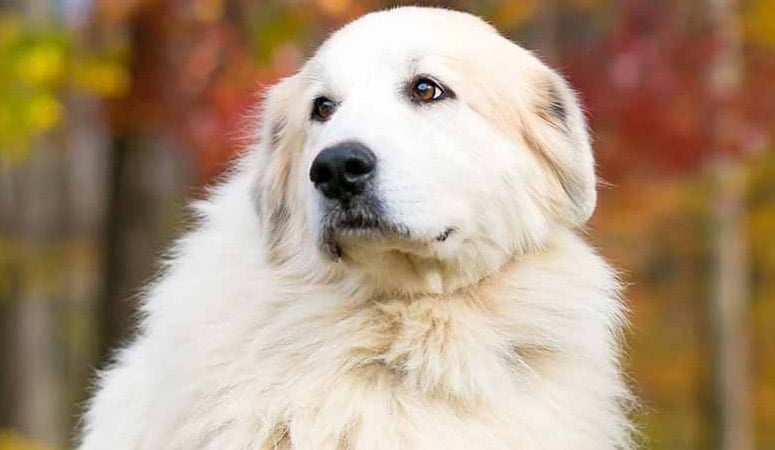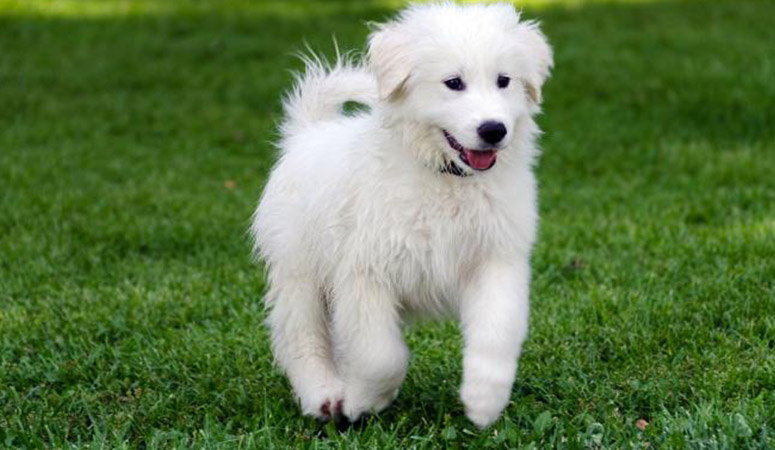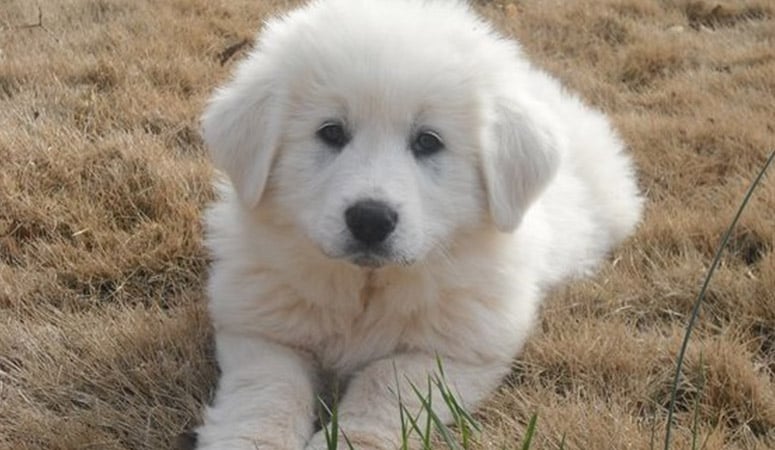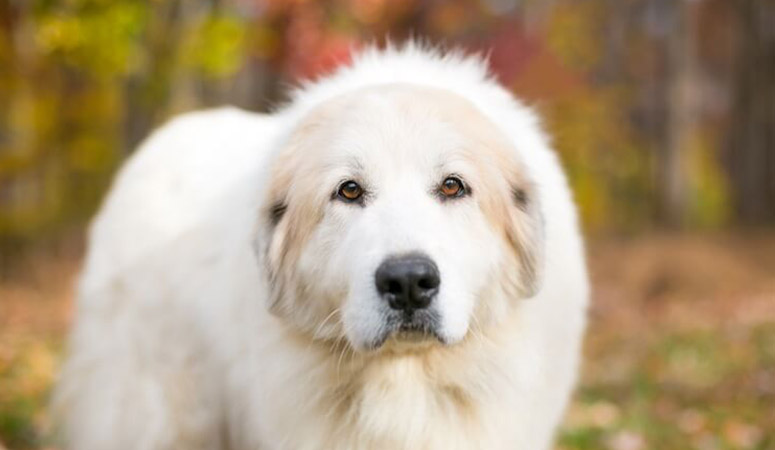Great Pyrenees
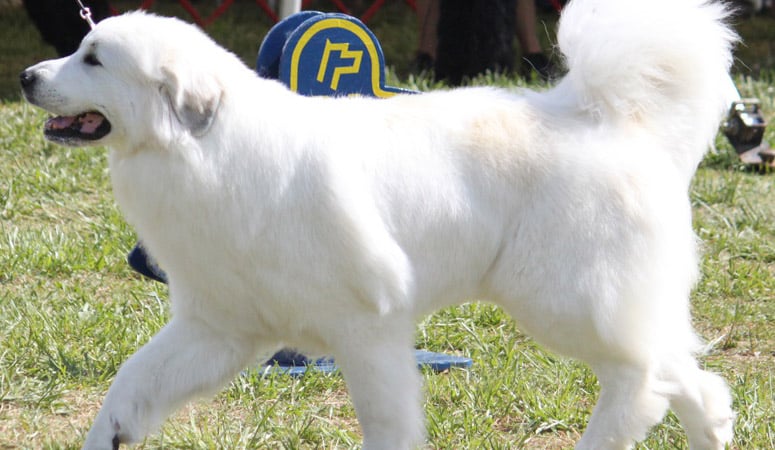
Big, smart, and strong-willed, The Great Pyrenees was developed as the primary protectors for flocks of sheep from the early 17th century. This is a breed that benefits from doing a job and he may get destructive if not occupied. Today, they have become popular dogs for the family around the world.
| Other Names | Chien de Montagne des Pyrenees, Pyr, Pyrenean Mountain Dog |
| Color | White |
| Height | Males: 27-32 inches. Females: 25-30 inches. |
| Weight | Males: 100+ pounds. Females: 85+ pounds. |
| Life Span | 10-12 years |
| Personality | Smart, Patient, Calm |
| Exercise | Needs Lots of Activity |
| Origin |
| Popularity | #69 |
| Groom Needs | Weekly |
| Kids Friendly | Yes with supervision |
| Dog Friendly | Yes with supervision |
| Watch Dog | |
| Family Dog | |
| Litter Size | 7-10 |
Great Pyrenees Pictures
Great Pyrenees Video
Introduction
What you get when you buy a Great Pyrenees is a big, muscular, double-coated dog. The dog’s outer coat is long and coarse, and it’s either straight or wavy. The undercoat is thick, soft, and fine. His coat is snowy white, but some can have patches of pale yellow in or gray, or tan. Some people think he looks like a polar bear! They stand around 32 inches at the shoulders and weigh in at about 45 kilograms. This dog is really well-mannered, showing great devotion to the family; tolerating well-behaved children around him. They are a wonderful guard dog for any family, being protective and carrying of both humans and animals. This dog was bred to be alone years back, so he enjoys quiet times at home in an orderly routine. He needs regular brushing of that double coat to keep it in good condition and remember, he will have an annual shed of his hair. He will need about 20-30 minutes of exercise each day to keep him in good condition. He enjoys cool and even cold weather and enjoys a long hike as long as it’s not in warm to hot weather – he shouldn’t be exercised in hot weather.
Living with Great Pyrenees
The great Pyrenees have abundant fur, but they don’t need a lot of grooming because their coat is dirt- and tangle-resistant. They have a double coat, with a longer outer coat and a soft undercoat. It is not difficult to maintain although the long double coat sheds heavily. Weekly brushing will help keep the dog’s coat and skin healthy and cut down on shedding, and bathe as needed.
Check your dog’s ears once a week for dirt, redness, or a bad odor that may indicate an infection. Also, the owner needs to wipe the ears out every week with a gentle cleanser to prevent ear infections. Brush the teeth at least two or three times a week to keep fresh breathe and prevent tartar buildup. Besides, trim the dog’s nails regularly because overly long nails can cause the dog discomfort.
The Great Pyrenees are not a highly active breed, they need roughly 20 to 30 minutes of exercise per day to keep them in their best conditions. This is not a lot for a dog breed in big size. Pyrs enjoy cool or cold weather and like to go for long hikes as long as it’s not hot.
Pyrs are intelligent dog breeds and can get bored a bit too easily. It is suggested to provide proper stimulation with toys to prevent any destructive behaviors.
At work, Pyrs will patrol their own territory, but tend to conserve their energy to resist everything that might threaten their flock. The breed also exercises the body and mind by participating in canine activities such as obedience trials and carts-pulling.
Generally, it is recommended to feed the Great Pyrenees with four to six cups of high-quality dry dog food every day, divided into two meals. And the dog food that is low-protein and specially formulated for large breeds is a good idea. More importantly, the food amount should depend on the dog’s weight, size, age, and activity level. There should be fresh and clean water at all times.
Some dogs are easy to get overweight, so you need to watch their calorie consumption and weight level all the time. Treats may be an important aid in training, but excessive intake can lead to obesity. Also, owners need to distinguish which human food is safe for dogs and which are not. If you have any problems with your dog’s weight or diet, just consult from your veterinarian.
The Great Pyrenees are prone to the following health conditions: hip and elbow dysplasia, patellar luxation, orthopedic concerns, Addison’s disease, eye diseases, bloat, congenital deafness, skin problems, etc.
Major concerns: patellar luxation, CHD
Minor concerns: OCD, skin problems, cataract, entropion, osteosarcoma, panosteitis, chondrodysplasia (dwarfism)
Occasionally seen: otitis externa, gastric torsion, spinal muscular atrophy
Suggested tests:
Hip Evaluation
Patella Evaluation
Total Annual Cost: $3538
Cost is estimated for the first year and may vary depending on many factors, such as dog food, health care, leash, collar, licensing, possible fencing, crates, training and obedience classes, dog-walking, grooming, treats, toys, flea, tick, and heart-worm meds, microchips, etc.
The Great Pyrenees may be a challenge to train although they are highly intelligent. This dog breed would like to make their own decisions, which is a trait that has stuck around. The owner needs to establish himself as the pack leader early on in training because Pyrs are strong-willed and stubborn. Also, fun and varied training sessions are recommended to train a happy, well-behaved dog.
Early socialization and puppy training classes are important to help the dog a good start in becoming a well-adjusted, well-mannered companion. Besides, Pyrs are capable of carting competitions, nosework, herding, and agility.
When doing agility or other strenuous activity training, slow and steady is the key, and if proper consideration is not taken, it may damage the growing bones and joints of the dog.
History
This beautiful dog originates from France. They worked with shepherds in the Pyrenees Mountains that divide Spain and France. They have also been sled dogs. This snowy dog has another name, and that is Pyrenean Mountain Dog. There are fossil remains of dogs that appear to be similar to the Great Pyrenees which have been found in Bronze Age deposits which date back from 1800 to 1000 B.C.
During medieval times, they were noticed for their beauty and elegance. Apparently there is a 12th-century bas-relief sculpture of a Pyreneen dog gracing the North Gate of Carcassone in France. There are also French writings describing this dog’s great work in the Mountains and being assistants to the human guards of the Chateau of Lourdes.
In 1675, the Great Pyrenees was deemed the Royal Dog of France by the Dauphin Louis XIV. Queen Victoria owned a Great Pyrenees.
In 1824, the first pair of Great Pyrenees arrived in the USA by General Lafayette. It was recognized by the American Kennel Club in 1933. The first American litter was born this year too at the Basquaerie kennels. Two years later, the Great Pyrenees Club of America formed.
Helpful Information
Breed Club: GREAT PYRENEES CLUB OF AMERICA, INC.
Breed Club Link: https://www.gpcaonline.org/
Breed Club Rescue: Great Pyrenees Club of America’s Rescue Program
Breed Club Rescue Link: https://gpcaonline.org/rescue.htm

